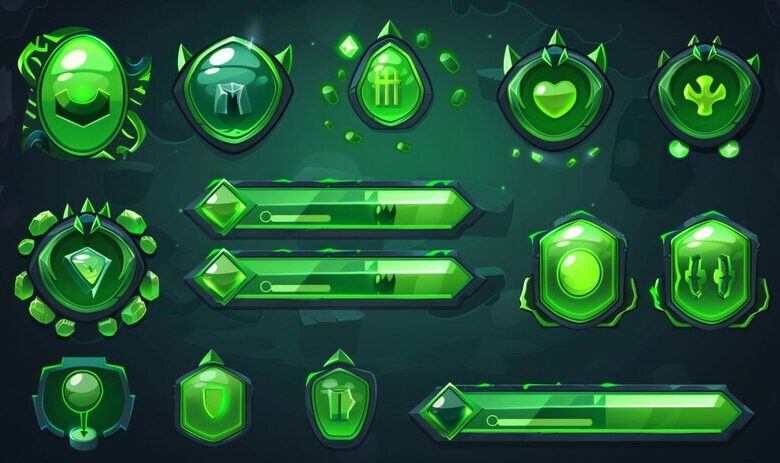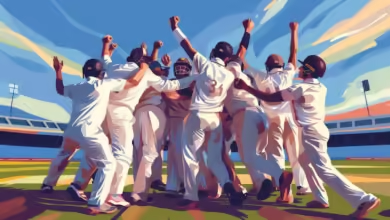The Evolution of halo (2003) game icons banners: A Deep Dive into the Game’s Visual Identity

Since its groundbreaking debut in 2001, the Halo franchise has become a cornerstone of modern gaming, with its rich universe, compelling narratives, and innovative gameplay. Halo: Combat Evolved, released in 2001, set the stage for a franchise that would come to define the first-person shooter genre. As the series evolved, so too did its visual identity, particularly through its icons and banners. This article explores the evolution of Halo’s icons and banners, tracing their journey from the early days of Halo: Combat Evolved to the latest entries in the series, examining how these elements have contributed to the game’s enduring appeal.
The Genesis of Halo: Combat Evolved
Halo: Combat Evolved, the first game in the series, introduced players to a universe brimming with epic battles, alien civilizations, and a mysterious protagonist known as Master Chief. The game’s success was not only a result of its engaging gameplay but also its distinctive visual style, which included its iconic logo and promotional banners.
The Halo Icon
The original Halo icon was simple yet powerful. Featuring the helmeted visage of Master Chief in a sleek, futuristic design, the icon captured the essence of the game’s protagonist and the high-tech world he inhabited. This minimalist yet striking icon became synonymous with the Halo franchise, representing not just the game but the entire universe it created.
Promotional Banners
The promotional banners for Halo: Combat Evolved played a crucial role in building anticipation and excitement for the game. These banners often featured dramatic artwork of Master Chief in action, battling alien foes or exploring alien landscapes. The banners used a palette of cool blues and greens, echoing the game’s futuristic setting and enhancing its otherworldly feel.
The Halo 2 Era: Expanding the Visual Narrative
Halo 2, released in 2004, expanded upon the universe introduced in the first game. With its release came a new set of icons and banners that reflected the game’s deeper storyline and increased scope.
The Halo 2 Icon
The Halo 2 icon retained the core elements of the original logo but introduced new elements to signify the game’s evolution. The icon featured an updated version of Master Chief’s helmet, now with additional details and a more polished look. This change represented the game’s technological advancements and the deeper, more complex narrative of Halo 2.
Evolving Banners
The promotional banners for Halo 2 showcased a more diverse range of content, highlighting the new characters, vehicles, and environments introduced in the game. The artwork often depicted intense battles between the Covenant and the UNSC, featuring dynamic poses and explosive action. The use of fiery oranges and deep reds in the banners created a sense of urgency and excitement, reflecting the game’s high-stakes conflict.
Halo 3 and Beyond: Refining the Iconic Look
Halo 3, released in 2007, was the culmination of the original trilogy, and its visual identity continued to evolve with the game’s deeper storyline and enhanced graphics.
The Halo 3 Icon
The Halo 3 icon introduced a refined version of the franchise’s logo, featuring a more detailed depiction of Master Chief’s helmet. The icon emphasized the game’s epic scope and the culmination of the trilogy’s narrative arc. The updated design included subtle textures and lighting effects that highlighted the advancements in graphical technology and the game’s grander scale.
Banners for Halo 3
The banners for Halo 3 were notable for their focus on the game’s climactic battles and pivotal moments. Artwork featured dramatic scenes of Master Chief and the Arbiter fighting against the Flood and Covenant forces. The banners employed a rich color palette, including dark greens, blues, and metallics, to convey the game’s tone of epic warfare and impending resolution.
The Post-Trilogy Era: Reaching New Heights
Following the original trilogy, the Halo franchise continued to expand with new entries and spin-offs. Each new release brought with it updated icons and banners that reflected the game’s evolving content and themes.

Halo: Reach (2010)
Halo: Reach, released in 2010, was a prequel to the original trilogy and featured a new set of icons and banners to match its unique setting and narrative.
- Icon: The Halo: Reach icon introduced a new logo that incorporated elements from the game’s setting, including the iconic “Reach” symbol and a more rugged version of Master Chief’s helmet. This icon emphasized the game’s focus on the fall of Reach and the heroic efforts of the Noble Team.
- Banners: The promotional banners for Halo: Reach showcased the game’s darker, more somber tone. Artwork featured the Noble Team in combat, with a focus on the tragic and heroic aspects of the story. The color scheme leaned heavily on dark blues, greys, and earthy tones, reflecting the game’s atmosphere of impending doom.
Halo 4 and Halo 5: Guardians
With Halo 4 (2012) and Halo 5: Guardians (2015), the franchise continued to evolve its visual identity.
- Halo 4 Icon: The icon for Halo 4 featured a sleek, modern design, with a futuristic rendition of the Halo ring and a refined version of Master Chief’s helmet. The new design highlighted the game’s advanced graphics and narrative focus on the Forerunners and the return of Master Chief.
- Halo 5: Guardians Icon: Halo 5: Guardians introduced a more complex icon, featuring the game’s new protagonists and antagonists. The icon depicted the helmet of Master Chief alongside that of Spartan Locke, emphasizing the game’s dual protagonist narrative.
- Banners: The promotional banners for both Halo 4 and Halo 5: Guardians highlighted the new gameplay elements and characters introduced in each game. The artwork featured high-action scenes and dramatic imagery, with color schemes that reflected the games’ futuristic and high-stakes themes.
The Halo Infinite Era: A New Chapter
Halo Infinite, released in 2021, marks a new chapter for the franchise, and its visual identity reflects both a return to classic elements and a step forward into new territory.
The Halo Infinite Icon
The Halo Infinite icon is a modern evolution of the franchise’s visual style, featuring a redesigned Halo ring and a more detailed depiction of Master Chief’s helmet. The icon combines classic elements with new, sleek design features, representing both the nostalgia of the series and its progression into a new era.
Banners for Halo Infinite
The banners for Halo Infinite showcase the game’s expansive open-world setting and the return to the franchise’s roots. Artwork prominently features Master Chief exploring new environments, battling against the Banished, and uncovering ancient secrets. The color palette combines vibrant blues and greens with darker, more somber tones, reflecting the game’s blend of classic and new elements.
The Impact of Icons and Banners on the Halo Franchise
Icons and banners are more than just visual elements; they play a crucial role in shaping the perception and identity of a game. For the Halo franchise, these elements have been integral in building excitement, conveying themes, and maintaining a consistent brand image across different entries.
Branding and Recognition
The consistent evolution of Halo’s icons and banners has helped maintain a strong brand identity while adapting to new technological advancements and storytelling elements. Each new design serves as a visual representation of the game’s core themes and innovations, ensuring that the franchise remains recognizable and relevant.
Community Engagement
Halo’s icons and banners have also played a role in engaging the community. Fans have embraced these visual elements, using them in fan art, merchandise, and promotional materials. The evolution of these elements reflects not only the franchise’s growth but also the active involvement of its fanbase.
Conclusion
The evolution of Halo’s icons and banners is a testament to the franchise’s growth and enduring appeal. From the early days of Halo: Combat Evolved to the latest entry in Halo Infinite, these visual elements have played a crucial role in defining the game’s identity and engaging its community. As the Halo franchise continues to evolve, one can expect its visual identity to adapt and grow, reflecting both the nostalgia of its past and the excitement of its future. Whether through iconic logos, promotional banners, or fan-created designs, the visual elements of Halo will undoubtedly continue to captivate and inspire players for years to come.

![[noblocc] kicked for being afk](https://worldtimenetwork.com/wp-content/uploads/2024/08/man-hoodie-is-playing-game-with-coin_659788-9441-220x150.jpg)



